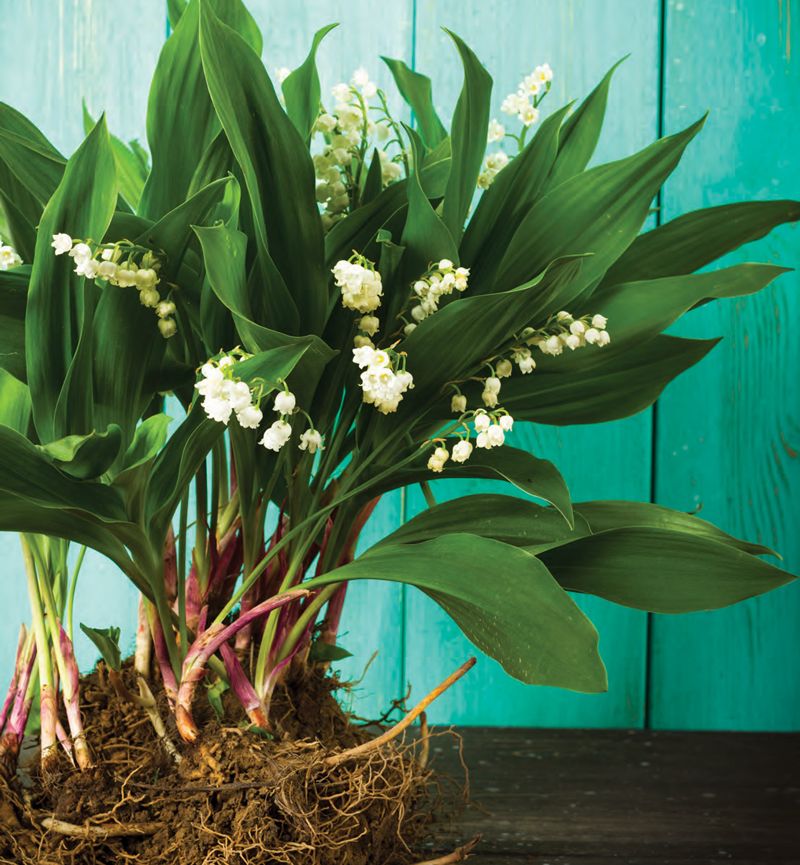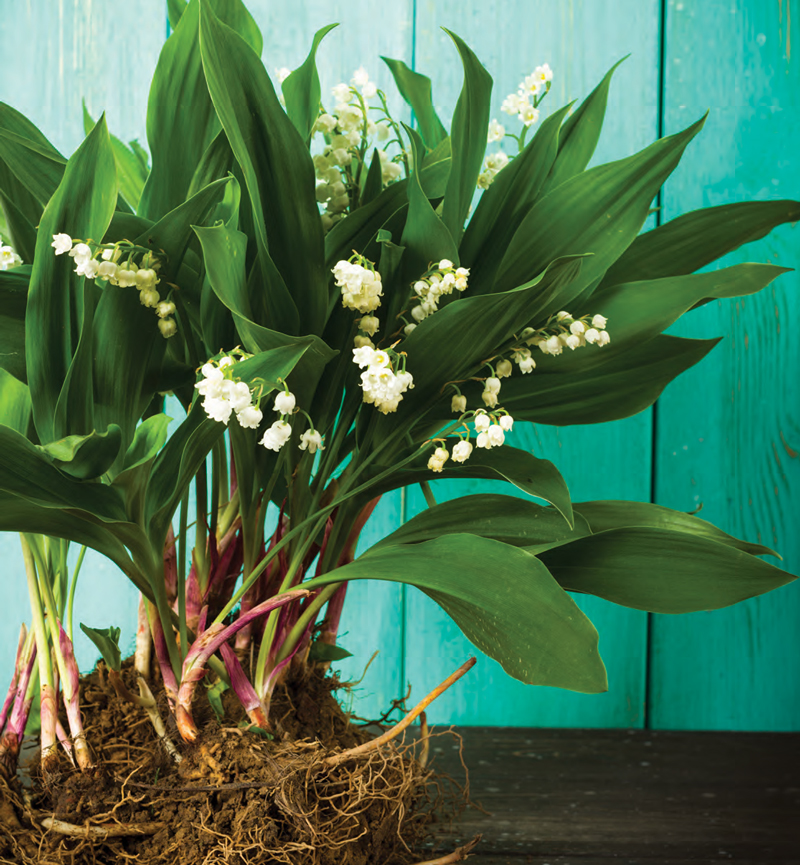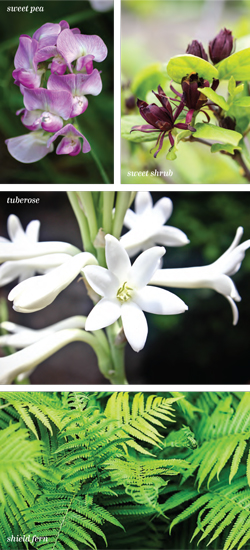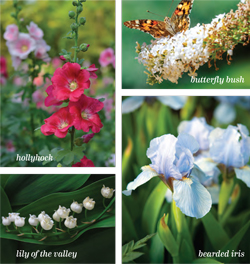Passalong Plants | The Tradition of Sharing Old-fashioned Garden Favorites


Mama always said, “Be careful what you admire in a friend’s garden. You might end up goin’ home with it.” All that is needed is an established plant that is easily propagated—whether dug up or given as a bulb or root—and a gardener eager to share.
The gift of a “passalong plant” is not only horticultural; it’s emotional as well. Whenever you see that flower, shrub, vine or tree, you’ll think of dear Aunt Bess who gifted it. Your garden will be populated not only by plants, but also by special memories.
Passalongs are most valuable when they’re old or heirloom plants not found in modern garden centers. While they might be available through mail order, the best source by far is a local “green thumber” who wants to share his or her bounty. The following plants should thrive in our area, assuming sunlight and soil conditions needs are met…
 Sweet shrub: Calycanthus floridus; sun or shade; moist, well-drained, loamy soil
Sweet shrub: Calycanthus floridus; sun or shade; moist, well-drained, loamy soil
Remember sitting on the front porch swing reveling in a sweet-scented breeze? You might have been enjoying sweet shrub, also known as “Carolina allspice” or “sweet Betsy.” This shrub, which grows six to 9 feet tall, was found in many Colonial Virginia gardens—Mount Vernon, Monticello and Williamsburg to name a few. Sow ripened seeds from the two- to three-inch seed capsules to get your own shrub.
Tuberose: Polianthes tuberosa; sun to part shade; moist soil
Another vintage plant, single-flowered tuberose has a heavenly spicy fragrance. While the newer, double-flowered “white pearl” is commercially available, the single must be passed along or mail ordered as a bulb.
Sweet pea: Lathyrus odoratus; full sun; moist, fertile soil
This six-foot tall vine was all the rage in the early 1900s, with over 200 varieties. These days, many more varieties exist, with a tremendous range of colors. Sweet pea gives off a scent similar to the classic White Shoulders perfume, and tends to attract butterflies and hummingbirds. Originally from Sicily, these are easy-care plants that reseed themselves. Pods full of seeds can be harvested and planted.
Sweet autumn clematis: Clematis panticulata; full sun; well-drained soil
There are many varieties of clematis, and this is one of the latest bloomers. It grows quickly to 30 feet or more, and has highly fragrant, small white blossoms in August and September, when many other flowers have faded. Seedlings shoot up all around the parent, so it’s easy to bequeath this variety.
 Southern shield fern: Thelypteris kunthii; full to light shade; moist soil
Southern shield fern: Thelypteris kunthii; full to light shade; moist soil
This two- to three-foot fern is difficult to buy, so if you see it in a garden, it was probably a passalong, or perhaps was dug up from the woods. Even a few pieces of its roots not only grow but spread. This fern tolerates hot, humid weather and even drought. It provides a beautiful backdrop for smaller colorful plants like red or pink caladiums.
Hollyhock: Alcea rosea; full sun; fertile, moist soil
Old hollyhocks that you might have admired along granddaddy’s back fence put out rows of single flowers, not the doubles of newer varieties. A symbol of fertility in Victorian times, each hollyhock produced many offspring. Care will be required as this plant can fall victim to rust, spider mites or Japanese beetles, which will strip leaves as well as flowers.
Lily of the valley: Convallaria majalis; full to part shade; fertile, acidic, moist, organically enriched soil
Lily of the valley is honored on France’s May 1st holiday. The tradition goes back to 1561 when the king distributed sprigs of “muguet” (lily of the valley) as a token of affection. Now French folk gather the flowers in the woods and sell small bouquets in cities, towns and along roadsides. This 8-inch plant has fragrant bell-shaped white flowers in spring. Pink versions also exist but are uncommon commercially and are usually passalongs. Plant each division of roots—each with at least one pinkish-white eye—an inch below the soil, then top with manure and an inch of shredded leaves. Keep these plants moist in the summer.
Butterfly bush: Buddleia davidii; sun; fertile, well-drained soil
The butterfly bush came from China in the early 1900s. This fragrant, easy-care plant features blooms from early summer until first frost (just clip off spent blooms for more flowering), and attracts butterflies to its nectar. Blooms come in a variety of colors—white, pink, purple, lavender, or maroon. It sends out seedlings which can be dug up for passalong, but with no guarantee of reproducing the parent bush’s color. Instead, root cuttings taken mid to late summer produce the most satisfactory passalongs. Cut the bush to the ground in the fall to avoid its bare branch winter appearance and to encourage new growth.
Daffodil: Pseudonarcissus telemonius plenus; full or part sun; moist, fertile, well-drained soil
This old-fashioned bulb, sometimes called “butter and eggs,” has lasted for generations and can be seen in historic Virginia gardens such as Monticello, Mount Vernon and Colonial Williamsburg. To propagate, divide a clump of them after the foliage has turned yellow, and plant the bulbs four to six inches apart at the depth they were previously growing. Daffodil bulbs are poisonous to rodents, and deer are uninterested in the flowers.
Bearded iris: Iris germanica; full or part sun; fertile, well-drained soil
Old-fashioned bearded iris are easy keepers—they require only sun and decent soil to provide prolific blooms, and are also drought tolerant and deer resistant. In the hot summer—dormant time for iris—dig up the clumps and divide the rhizomes, each bearing some feeder roots, and plant. Just be sure to leave the top half of the rhizome visible when planting. Newer hybrids, often bred by members of the Iris Society, display unusual colors of brown, gray, green and black, but can be fussier and are subject to borers and rot.
There are many more passalongs to discover—from the smallest four- to six-inch creeping phlox, easily rooted from pieces of stem, to the 10- to 12-foot tall Chinese snowball bush, which can be rooted from cuttings taken in midsummer. In between these extremes of sizes, there are seed pods, bulbs, seedlings and cuttings to be rooted—all waiting to be distributed to gardeners eager to share in the joy of passalongs!
Bearded Iris, Butterfly bush, Current Issue, Daffodil, heirloom, Hollyhock, Lily of the valley, sharing, Southern shield fern, Sweet autumn clematis, Sweet pea, Sweet shrub, Tuberose, vintage plants






